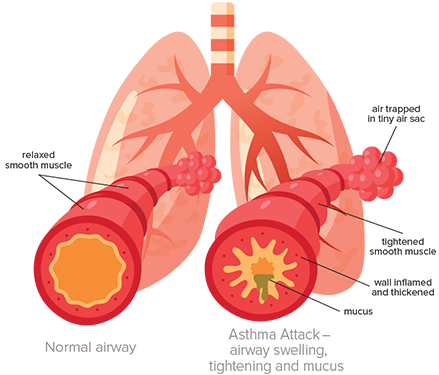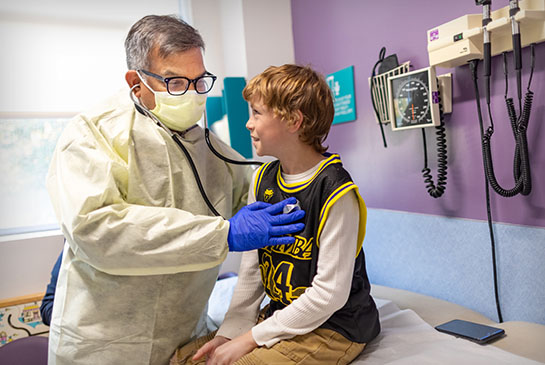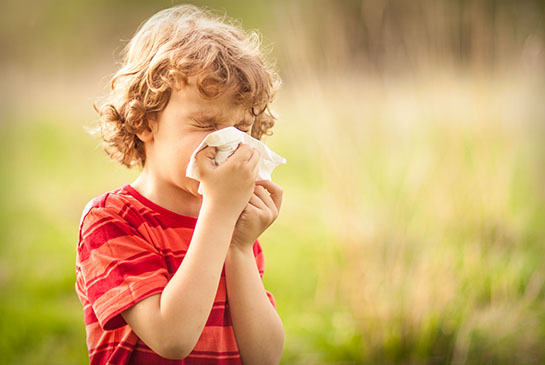An Introduction to
Asthma in Children and Teens
Asthma in children and teens
Download An Introduction to Asthma in Children and Teens booklet
Our goal is to help you take control of your child’s asthma so you can avoid the emergency room and hospital. Your child’s doctors, nurses and respiratory therapists will help you and your child learn about the signs and symptoms of asthma, home medications and asthma triggers. We will also review the asthma action plan, so that you feel comfortable in managing your child’s asthma. By the time you go home, you will know:
What is asthma?
- Asthma is a long-term disease of the airways (breathing tubes) in the lungs.
- A child with asthma has sensitive airways that can react to many things, such as cigarette smoke, pollen, viruses, or cold air.
- Asthma causes the airways in the lungs to narrow due to inflammation. This results in asthma symptoms that can be mild to severe.
- Even when your child is feeling fine, asthma is present, so a reaction can occur at any time.
- Asthma takes ongoing monitoring and management to keep symptoms under control.
- The exact cause of asthma is not known. Genetics (what runs in your family) and environment (what is in the air you breathe) are both important. There is no cure for asthma, but it is very treatable with medication.
- Asthma symptoms may disappear as your child gets older. Children with severe asthma are less likely to outgrow their symptoms.
- There are steps you can take to control your child's asthma so that he or she can live a normal, active life and sleep through the night without asthma problems.
What happens during an asthma attack?

- During an asthma attack, the lining of your child’s airway becomes swollen and produces thick, sticky mucus. The muscles around the airways tighten causing the airways to narrow.
- These changes in the airways block the flow of air, which make it hard to breathe and causes other asthma symptoms like coughing or wheezing.
- The airways can narrow so much that it is hard for air to go in and out of your child’s lungs.
- It is important for you as a parent to recognize these symptoms your child might experience.
Our asthma care services



